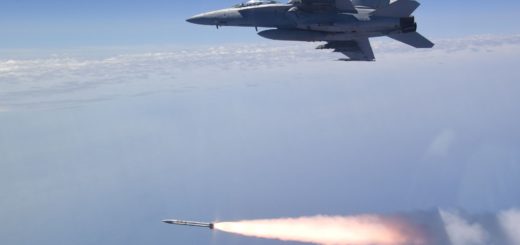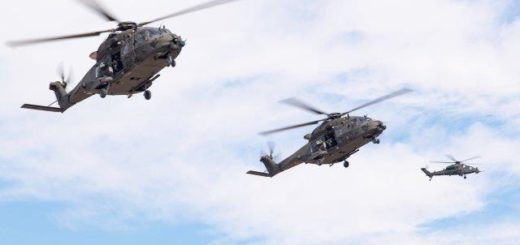Breaking News: Russia Offers Su-57 Fighter Jets Production To India Competing With US F-35 Stealth Jet Deal

{loadposition bannertop}
{loadposition sidebarpub}
According to information published by CNBC TV18, an Indian News TV channel, on June 11, 2025, India is engaged in high-level deliberations over a Russian proposal to jointly manufacture the Sukhoi Su-57 fifth-generation fighter jet, a strategic initiative aimed at strengthening the Indian Air Force (IAF) and enhancing the country’s indigenous defense manufacturing capabilities. This proposal arrives amidst growing U.S. interest in selling the F-35A Lightning II stealth fighters to India, positioning New Delhi at a pivotal crossroads in selecting its next-generation combat aircraft platform.Follow Army Recognition on Google News at this link
India weighs co-producing the Russian Su-57 with full tech transfer as an alternative to acquiring the US F-35A. The decision pits industrial growth and legacy partnerships against cutting-edge stealth and multirole capabilities. (Picture source: Army Recognition Group)
India’s consideration of the Russian Su-57 fighter jet is rooted in both strategic continuity and industrial advantage. Russia remains India’s largest and most enduring defense supplier, with over 70% of the IAF’s existing fleet of combat aircraft, such as the Su-30MKI, MiG-29, and MiG-21, being of Russian origin. The Su-30MKI, India’s frontline air superiority platform, is produced domestically under license by Hindustan Aeronautics Limited (HAL) at its Nashik facility. This existing production infrastructure offers a seamless pathway for integration of Su-57 manufacturing, enabling cost savings, faster implementation, and a stronger domestic supply chain. Russia’s proposal includes extensive technology sharing, joint development of avionics and stealth systems, and the establishment of a dedicated production line in India.
At the India Today Conclave 2025, Russian Ambassador Denis Alipov underscored the capabilities of the Su-57, describing it as the most advanced combat aircraft currently operational. The Su-57, also known by its NATO designation “Felon,” is designed for high-speed maneuverability, long-range strike, and supercruise flight. It integrates low-observable features, an internal weapons bay, and thrust-vectoring engines. Though its radar cross-section is higher than that of the F-35, it compensates with superior agility, range, and a larger weapons payload, offering significant tactical flexibility.
Meanwhile, the U.S. has offered India the F-35A, its most advanced and battle-tested fifth-generation fighter. The F-35A incorporates AI-enhanced combat systems, advanced sensor fusion, and full-spectrum stealth capabilities. It operates as part of a globally integrated fleet and has seen extensive deployment across NATO and allied forces. However, unlike the Russian offer, the U.S. proposal does not include co-production or deep industrial collaboration. The F-35A is priced at approximately $80 million per unit, and its integration would require the IAF to adopt new maintenance doctrines, supply systems, and pilot training standards.
India’s broader defense-industrial ambitions are a key factor in the evaluation process. The country is advancing its Advanced Medium Combat Aircraft (AMCA) program and seeking to build indigenous engine capabilities. France’s Safran and Britain’s Rolls-Royce have submitted competing offers for 100% technology transfer in fifth-generation fighter engine development. A co-production deal with Russia on the Su-57 could serve as a foundational step for this effort, providing real-world experience in stealth airframe construction, radar-absorbing materials, and next-generation avionics.
In contrast, while the F-35A would instantly elevate India’s operational edge, it offers limited opportunity for domestic aerospace development. The aircraft’s proprietary nature and security architecture restrict technology transfers and industrial participation, potentially limiting India’s long-term ambitions in defense self-reliance.
From a performance perspective, the F-35A offers unmatched electronic warfare capability, situational awareness, and integration into joint force networks. It excels in multirole versatility, especially in suppression of enemy air defenses and high-threat environments. The Su-57, however, provides greater endurance, weapons diversity, and tactical flexibility in conventional air superiority roles. With India’s extensive experience operating Russian platforms, logistics and training transitions for the Su-57 would be smoother and more cost-effective.
The choice between the Russian Su-57 and U.S. F-35A is not merely a procurement decision but a defining moment in India’s defense industrial trajectory. While political alignments are often discussed, this decision is expected to be driven primarily by operational requirements, technological adaptability, cost efficiency, and the strategic goal of indigenous capability development. A potential Su-57 deal could jumpstart a new era of Indo-Russian defense co-production, while the F-35A path could cement deeper integration with Western systems at the cost of reduced domestic involvement.
As India moves closer to finalizing its fifth-generation fighter acquisition plan, the global defense community watches with anticipation. The outcome will shape not only the Indian Air Force’s aerial dominance but also the future of India’s role as a rising aerospace power.

{loadposition bannertop}
{loadposition sidebarpub}
According to information published by CNBC TV18, an Indian News TV channel, on June 11, 2025, India is engaged in high-level deliberations over a Russian proposal to jointly manufacture the Sukhoi Su-57 fifth-generation fighter jet, a strategic initiative aimed at strengthening the Indian Air Force (IAF) and enhancing the country’s indigenous defense manufacturing capabilities. This proposal arrives amidst growing U.S. interest in selling the F-35A Lightning II stealth fighters to India, positioning New Delhi at a pivotal crossroads in selecting its next-generation combat aircraft platform.
Follow Army Recognition on Google News at this link
India weighs co-producing the Russian Su-57 with full tech transfer as an alternative to acquiring the US F-35A. The decision pits industrial growth and legacy partnerships against cutting-edge stealth and multirole capabilities. (Picture source: Army Recognition Group)
India’s consideration of the Russian Su-57 fighter jet is rooted in both strategic continuity and industrial advantage. Russia remains India’s largest and most enduring defense supplier, with over 70% of the IAF’s existing fleet of combat aircraft, such as the Su-30MKI, MiG-29, and MiG-21, being of Russian origin. The Su-30MKI, India’s frontline air superiority platform, is produced domestically under license by Hindustan Aeronautics Limited (HAL) at its Nashik facility. This existing production infrastructure offers a seamless pathway for integration of Su-57 manufacturing, enabling cost savings, faster implementation, and a stronger domestic supply chain. Russia’s proposal includes extensive technology sharing, joint development of avionics and stealth systems, and the establishment of a dedicated production line in India.
At the India Today Conclave 2025, Russian Ambassador Denis Alipov underscored the capabilities of the Su-57, describing it as the most advanced combat aircraft currently operational. The Su-57, also known by its NATO designation “Felon,” is designed for high-speed maneuverability, long-range strike, and supercruise flight. It integrates low-observable features, an internal weapons bay, and thrust-vectoring engines. Though its radar cross-section is higher than that of the F-35, it compensates with superior agility, range, and a larger weapons payload, offering significant tactical flexibility.
Meanwhile, the U.S. has offered India the F-35A, its most advanced and battle-tested fifth-generation fighter. The F-35A incorporates AI-enhanced combat systems, advanced sensor fusion, and full-spectrum stealth capabilities. It operates as part of a globally integrated fleet and has seen extensive deployment across NATO and allied forces. However, unlike the Russian offer, the U.S. proposal does not include co-production or deep industrial collaboration. The F-35A is priced at approximately $80 million per unit, and its integration would require the IAF to adopt new maintenance doctrines, supply systems, and pilot training standards.
India’s broader defense-industrial ambitions are a key factor in the evaluation process. The country is advancing its Advanced Medium Combat Aircraft (AMCA) program and seeking to build indigenous engine capabilities. France’s Safran and Britain’s Rolls-Royce have submitted competing offers for 100% technology transfer in fifth-generation fighter engine development. A co-production deal with Russia on the Su-57 could serve as a foundational step for this effort, providing real-world experience in stealth airframe construction, radar-absorbing materials, and next-generation avionics.
In contrast, while the F-35A would instantly elevate India’s operational edge, it offers limited opportunity for domestic aerospace development. The aircraft’s proprietary nature and security architecture restrict technology transfers and industrial participation, potentially limiting India’s long-term ambitions in defense self-reliance.
From a performance perspective, the F-35A offers unmatched electronic warfare capability, situational awareness, and integration into joint force networks. It excels in multirole versatility, especially in suppression of enemy air defenses and high-threat environments. The Su-57, however, provides greater endurance, weapons diversity, and tactical flexibility in conventional air superiority roles. With India’s extensive experience operating Russian platforms, logistics and training transitions for the Su-57 would be smoother and more cost-effective.
The choice between the Russian Su-57 and U.S. F-35A is not merely a procurement decision but a defining moment in India’s defense industrial trajectory. While political alignments are often discussed, this decision is expected to be driven primarily by operational requirements, technological adaptability, cost efficiency, and the strategic goal of indigenous capability development. A potential Su-57 deal could jumpstart a new era of Indo-Russian defense co-production, while the F-35A path could cement deeper integration with Western systems at the cost of reduced domestic involvement.
As India moves closer to finalizing its fifth-generation fighter acquisition plan, the global defense community watches with anticipation. The outcome will shape not only the Indian Air Force’s aerial dominance but also the future of India’s role as a rising aerospace power.






